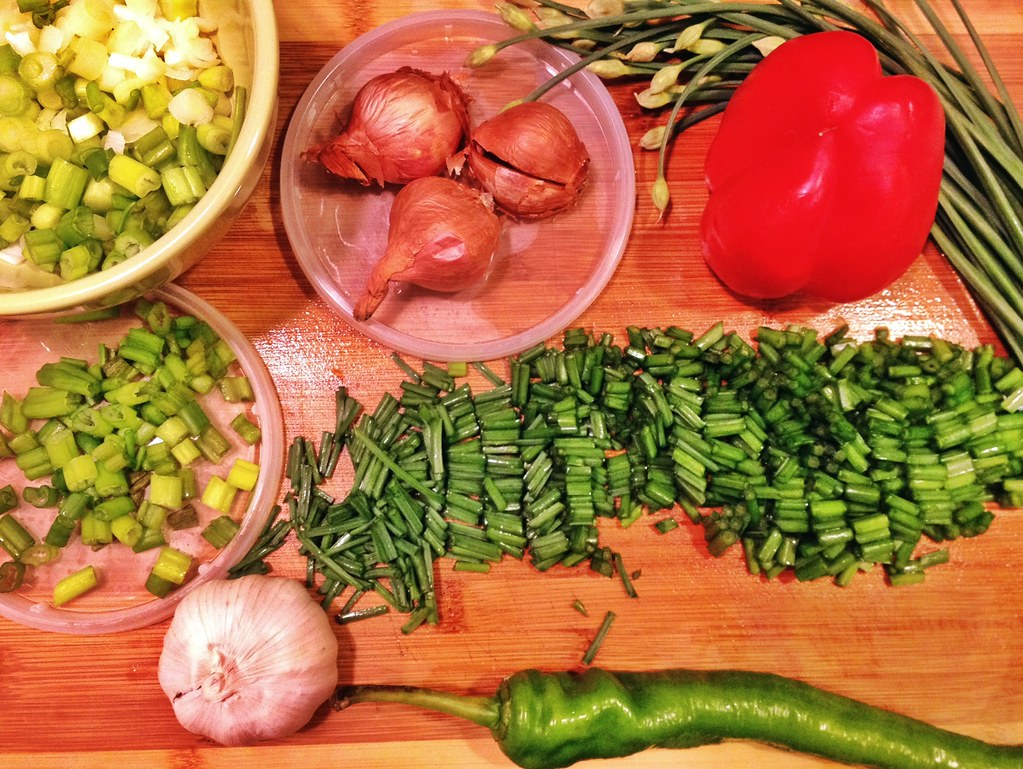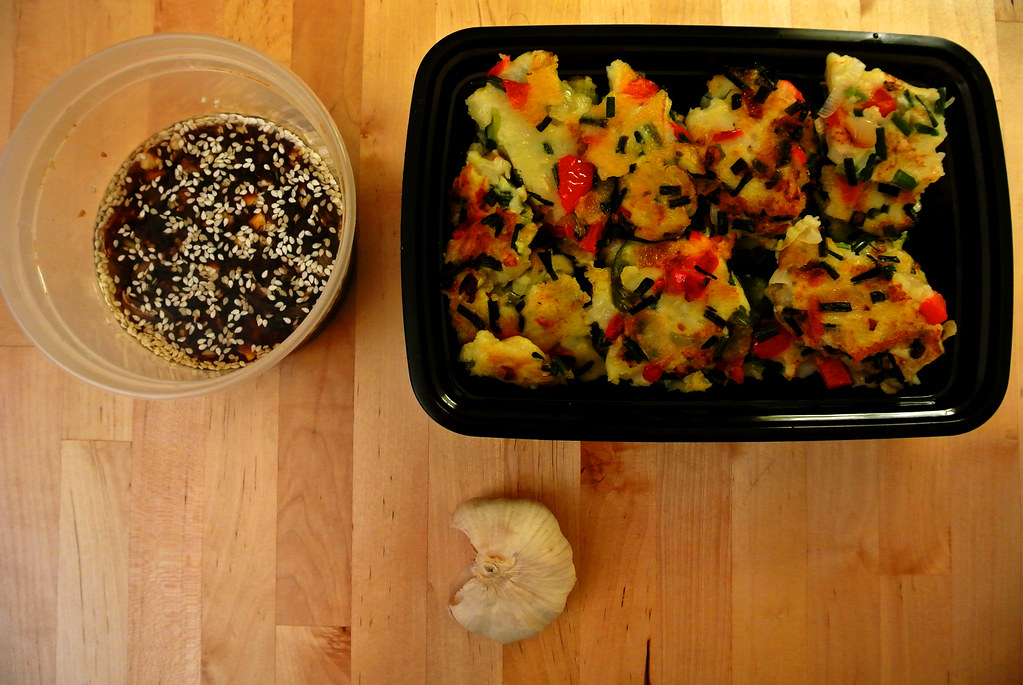Food Science final project: Chive Pancake with Shallot Sesame Dipping Sauce
So I just finished my classes for the semester, and my last assignment was a presentation on my research paper on a functional food: garlic. I'll just spare you the details and tell you to EAT MORE GARLIC. And scallions, chives, leek, and onions. This family of plants are called alliums, and current research shows that eating these will reduce your risk of contracting cancer, heart disease, or sicknesses in general. Yes, those are bold claims, but I really do believe in the power of garlic. Plus it makes your food smell so aromatic! Life would be bland without alliums.
Here are some interesting mythology, folklore, and history about garlic:
- There is an Islamic myth where after Satan left the Garden of Eden, garlic arose in his left footprint and onion in the right.
- Those following the steps of the Buddha* are warned to “refrain from eating [the] five pungent plants [onions, garlic, shallots, leeks and chives] of this world. If these five are eaten cooked, they increase one's sexual desire; if they are eaten raw, they increase one's anger.”
- During the first Olympic Games in Greece, garlic was used as an ergogenic aid.
- In China, onion and garlic tea have been used to treat fevers, headache, cholera, and dysentery.
- In India, garlic has long been used as an antiseptic for cleansing wounds and ulcers.
- During the two world wars, garlic was also used as an antiseptic to prevent gangrene. In addition to these uses, it has also been associated with treating bites, intestinal worms, and even tumors.
*Yup, according to Mahayana Buddhism, the following recipe is not "vegetarian."
At home my mom always makes chive omelets, and I always order seafood pajeon when my family eats out, so here is a recipe that puts the two together! In this experiment, various
relatives of the Allium family will be used in a modern vegan** take of the Korean
pancake, pajeon, served with a Chinese Hakka inspired dipping sauce. Pajeon is
an appetizer that is typically prepared with squid and scallions or with
kimchi.
In this recipe, there will be a combination of garlic chives and scallions, which are used widely in Eastern Asian cooking. The dipping sauce draws insight from a traditional Hakka sauce used for steamed chicken. The Korean pajeon dipping sauce typically consists of soy sauce and vinegar, however this flavorful Southern Chinese sauce is traditionally prepared with soy sauce and sautéed shallots. This rendition will also include some aromatic rice wine, sesame seeds, and raw garlic and scallion tails.
In this recipe, there will be a combination of garlic chives and scallions, which are used widely in Eastern Asian cooking. The dipping sauce draws insight from a traditional Hakka sauce used for steamed chicken. The Korean pajeon dipping sauce typically consists of soy sauce and vinegar, however this flavorful Southern Chinese sauce is traditionally prepared with soy sauce and sautéed shallots. This rendition will also include some aromatic rice wine, sesame seeds, and raw garlic and scallion tails.
PAJEON
(PANCAKE)
|
HAKKA
SHALLOT SAUCE
|
- 1 cup white flour
- 1 cup water
- ¼ tsp baking powder
- 1 cup garlic chives, chopped
- 1 cup scallions, chopped
- ½ cup onion, chopped
- 1 red pepper, chopped
- 1 chili pepper, chopped
- 3 tbs canola oil
|
- 4 tbs soy sauce (low sodium)
- 4 tbs rice wine
- 1 tbs canola oil
- ¼ cup shallots, chopped
- 2 cloves of garlic, minced
- 1 tbs sesame oil
- 2 tsp sesame seeds
- 2 tsp scallion tails
|
1. Mix together the flour and the baking powder. Add the
water and beat in the egg mix until there are no lumps.
2. In a large pan, heat canola oil over medium-high heat
with chili pepper.
3. Once heated, mix in garlic chives, scallions, and red
pepper. Once slightly browned, pour in the batter. The batter should cover the
entire bottom of the pan.
4. Pan-fry the pancake until the edges are visibly cooked.
Then carefully flip it over and cook the other side. Pan-fry both sides until golden brown.
5. In the meantime, prepare the sauce. Heat the canola oil
and shallots in a small saucepot over high heat. Once browned, add the soy
sauce and rice wine. Turn to low heat and simmer until it comes to a boil. Then
remove from heat and mix in the garlic and sesame seeds. Top with scallion
tails and set aside.
6. Once the pancake is cooked, remove from heat and divide
into eight slices. Serve with the sauce on the side.

